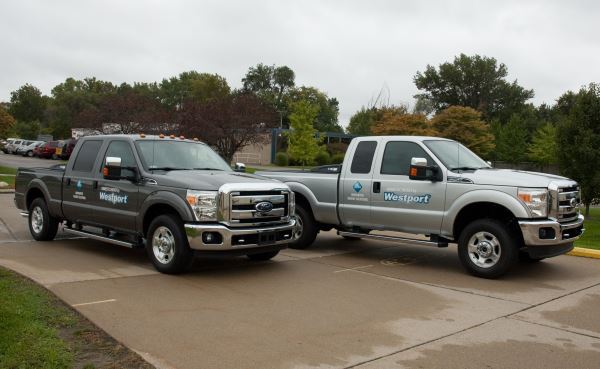 Engineers at Westport Innovations Corp. slash development time by two-thirds using a unique one-dimensional simulation platform to model unique injection systems for conventional diesel engines to run on inexpensive and clean-burning natural gas.
Engineers at Westport Innovations Corp. slash development time by two-thirds using a unique one-dimensional simulation platform to model unique injection systems for conventional diesel engines to run on inexpensive and clean-burning natural gas.
In the new, green economy, pickup truck owners have an especially rough road ahead of them. With business down, profits are being gobbled up by higher diesel fuel prices and rising investment costs for complying with increasingly stringent government emission standards.
Natural gas as an alternative fuel may be the answer to these problems. The fuel is in abundant supply, and prices have remained relatively stable for years—well below that of diesel. Also, natural gas burns much cleaner—with 33 percent less NOx and 20 percent lower greenhouse gas emissions than equivalent diesel fuel.
Fuel storage is one of the primary challenges: gaseous fuel requires a much larger volume to store the same amount of energy as diesel fuel. Reduction is often achieved with high-pressure tanks, which still require lots of space. An even more compact form is liquefied natural gas (LNG) stored in insulated tanks at -160 degrees and then vaporized using excess engine heat. This is a particularly effective strategy for vehicles with high fuel usage such as heavy-duty trucks.
Not So Easy
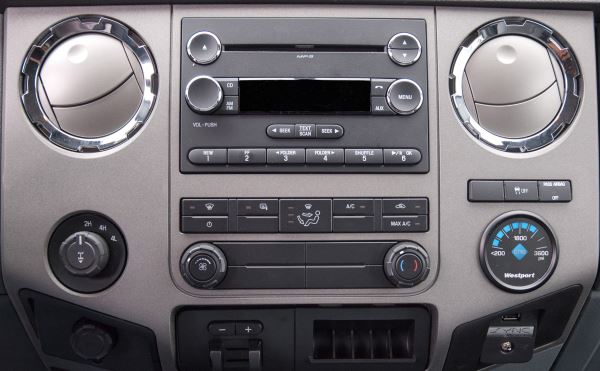
Converting a diesel engine to run on natural gas is a tricky engineering problem. To provide sufficient power, the flow of large amounts of the natural gas—in much greater volumes than equivalent liquid diesel fuel—must be carefully regulated and quickly delivered to the cylinder at just the right time in the combustion cycle. To complicate matters, natural gas requires a temperature of 800 degrees to ignite, considerably higher than the easy-to-achieve 500 degrees for burning diesel fuel.
The most common solution is to convert the engine to spark ignition, reduce the compression ratio, and feed the gas into the intake manifold where it is mixed with incoming air. This method usually results in lower efficiency and reduced power and torque, however, and it is not well suited to heavy-duty trucks where fuel efficiency and engine performance are critical.
Liquid Spark Plug
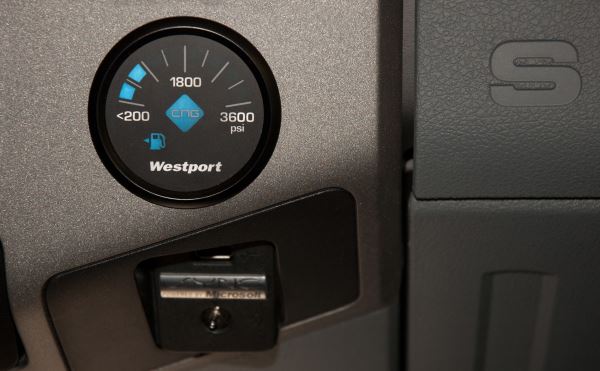 Engineers at engine and fuel system supplier Westport Innovations Corp. in Vancouver, Canada, have overcome these technical roadblocks with an ingenious fuel injector specifically designed for natural gas engines. At the heart of the Westport HPDI (high-pressure direct injection) system is a revolutionary patented injector tip assembly with dual-concentric needles (in other words, one within another). The needles serve as little valves that open as they are lifted at just the right time by a hydraulic circuit actuated by a set of electromagnetic solenoids. This allows a small amount of diesel fuel to be injected as an ignition source—sort of a “liquid spark plug”—followed in a matter of milliseconds by large quantities of natural gas sprayed at high pressure into the combustion chamber.
Engineers at engine and fuel system supplier Westport Innovations Corp. in Vancouver, Canada, have overcome these technical roadblocks with an ingenious fuel injector specifically designed for natural gas engines. At the heart of the Westport HPDI (high-pressure direct injection) system is a revolutionary patented injector tip assembly with dual-concentric needles (in other words, one within another). The needles serve as little valves that open as they are lifted at just the right time by a hydraulic circuit actuated by a set of electromagnetic solenoids. This allows a small amount of diesel fuel to be injected as an ignition source—sort of a “liquid spark plug”—followed in a matter of milliseconds by large quantities of natural gas sprayed at high pressure into the combustion chamber.
Sizing and synchronizing this complex system for different engine models was formerly quite a time-consuming task. Engineers had to balance many different injector aspects including flows of natural gas and diesel through the piping and jets as well as the solenoid actuation and dual-needle lift.
Determining the natural gas volume to be sprayed in the cylinder—enough to provide sufficient power without flooding and stalling the engine—was particularly challenging. Fuel flow must be precisely adjusted every millisecond in a natural gas engine, not only to account for different load demands, but also for changes in gas density and energy capacity that—because of the gas compressibility—vary widely with environmental temperature and pressure.
Needing A Better Way
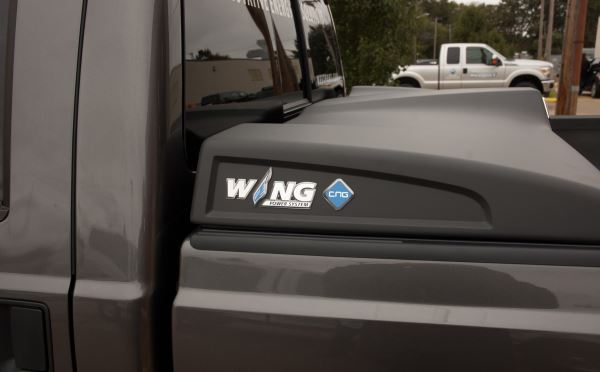 Until recently, Westport engineers relied on an in-house Fortran program written in the early 1990s to develop designs satisfying all these requirements. With this solution, making even the simplest design change took several days of programming and adding a new component required several weeks’ more work. Gas properties were determined using look-up tables in a cumbersome process too time-consuming to evaluate alternative design options for the injection system. Moreover, validating a model based on test fixtures required a prohibitive amount of coding to replicate the test fixture geometry.
Until recently, Westport engineers relied on an in-house Fortran program written in the early 1990s to develop designs satisfying all these requirements. With this solution, making even the simplest design change took several days of programming and adding a new component required several weeks’ more work. Gas properties were determined using look-up tables in a cumbersome process too time-consuming to evaluate alternative design options for the injection system. Moreover, validating a model based on test fixtures required a prohibitive amount of coding to replicate the test fixture geometry.
To gear up for the market’s growing demand for natural gas engines, Westport needed a more efficient process for developing optimal injector designs much faster. With this goal in mind, they investigated the LMS Imagine.Lab AMESim 1D simulation platform to predict complex multi-domain system performance.
Instead of expert programmers writing code, the Westport engineers themselves built the model graphically by dragging, dropping and linking simple icons.
The resulting sketch looks simple, but underlying it is a sophisticated representation of the interrelated physics of the entire injector system. In this way, the LMS Imagine.Lab AMESim model completely represents the complex multi-physics behavior of the injection system in the real world: the pneumatics of the natural gas flow, the hydraulics of the diesel fuel flow, electromagnetics of solenoid actuators and all the mechanical aspects of the needle assembly.
Modeling Real Gas Behavior
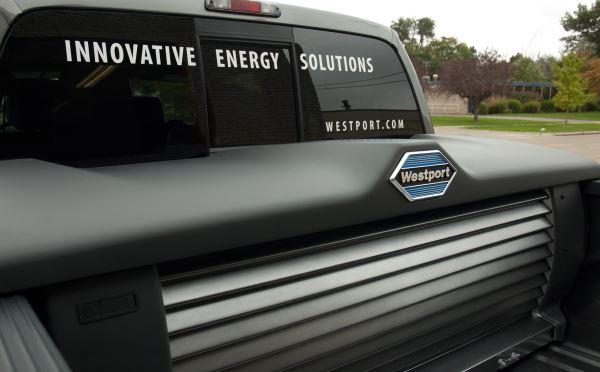 Particularly relevant to Westport’s work is LMS Imagine.Lab Fluids Systems’ unique ability to accurately represent natural gas flow under a wide range of environmental temperature and pressure variations—from a frigid Canadian winter day at altitude to the searing desert heat at sea level. By taking these variations into account along with load demand requirements and other specifications, the Real Gas Model feature in LMS Imagine.Lab provides engineers with an extremely accurate representation of gas fuel flow.
Particularly relevant to Westport’s work is LMS Imagine.Lab Fluids Systems’ unique ability to accurately represent natural gas flow under a wide range of environmental temperature and pressure variations—from a frigid Canadian winter day at altitude to the searing desert heat at sea level. By taking these variations into account along with load demand requirements and other specifications, the Real Gas Model feature in LMS Imagine.Lab provides engineers with an extremely accurate representation of gas fuel flow.
“LMS Imagine.Lab’s Real Gas Model is absolutely critical to our work today. It accurately represents natural gas fuel flow under a widely varying range of environmental conditions,” stated Peter Kostka, systems development engineer at Westport. “The model is much more accurate than the standard approximation in engineering handbooks, which can deviate as much as 25 percent from real-world behavior. Also, the model is more readily modified than our previous table look-up method, enabling us to evaluate design options, quickly validate these designs on test fixtures and have greater confidence in the final product.”
Simple And Smart System Models
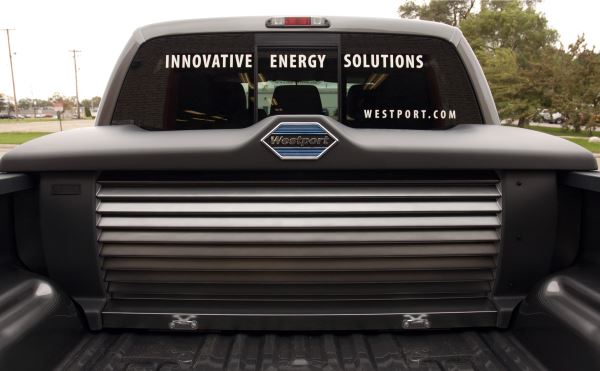 Using this solution, engineers initially size the parts simply by entering parameters as prompted. Output plots straightforwardly show predictions specified by Westport engineers including fuel flow and injection pressures for various loads.
Using this solution, engineers initially size the parts simply by entering parameters as prompted. Output plots straightforwardly show predictions specified by Westport engineers including fuel flow and injection pressures for various loads.
Built-in optimization routines run on the model determine parameter values for maximum engine performance.
“Automated optimization tools compare hundreds of different alternative part configurations and indicate the one for achieving the most power and efficiency for given load and environmental conditions,” explained Kostka.
After arriving at an optimal design, Westport engineers use the new model to check for design sensitivity to manufacturing variabilities—in other words, how the injection system performs within tolerance dimensions for critical parts, such as valve and needle diameters.
Impressive Benefits
“The LMS Imagine.Lab platform is an outstanding tool to quickly arrive at a robust design that accounts for such a wide range of operating conditions and manufacturing variabilities,” stated Kostka. “Previously, at least six months were required to reach a workable design—including several rounds of prototype testing to iron out problems. Now we develop optimal designs in just two months—with a single hardware test for final verification.
“By slashing design time by two-thirds, we’re able to introduce new products, improve designs of existing products, and provide our customers—the world’s leading engine manufacturers—with a customized response faster than ever.”
According to Kostka, gains in engineering efficiency are even greater in being able to adapt the same basic injector system design to multiple engine variations—each of which may have slightly different dimensions, assembly layouts and operating specifications.
“Once you have the injection system modeled, modifying the packaging, flow requirements and mechanics for each variation can be done very quickly just by modifying a few parameters in LMS Imagine.Lab AMESim,” added Kostka. “The business ramifications for Westport are awesome considering the potentially huge market for engines fueled by natural gas. LMS Imagine.Lab technology has become an essential part of the Westport development process, strengthening its key market position as demand for these energy-efficient, clean-burning engines grows in the coming years.”